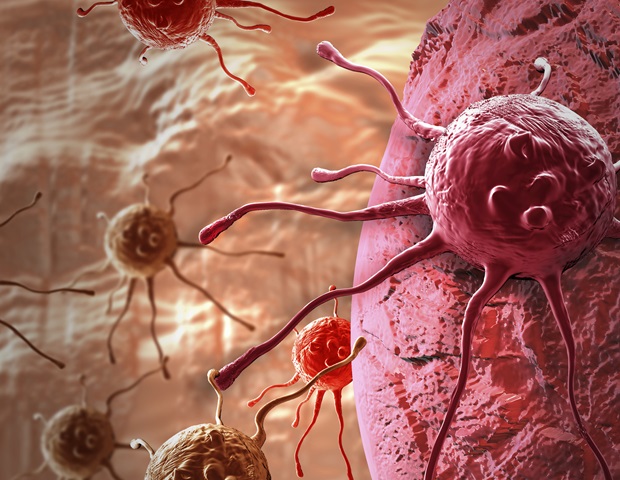The Future of the Y Chromosome: Can Humans Adapt to Its Potential Disappearance?

When you flip open a high-school biology textbook, the explanation of sex determination appears straightforward: two X chromosomes result in a female, while one X paired with a Y leads to a male. This system, which has been in place for around 300 million years, hinges on the presence of the Y chromosome, which houses the SRY gene—crucial for the development of testes.
However, recent discussions within genetics circles are raising alarms about the stability of this system. The Y chromosome has been gradually losing parts of itself, and computer models predict that the remnants may completely disappear in approximately 11 million years. This raises significant questions regarding the implications of such a loss, particularly concerning cancer risk and the future of human reproduction.
What would happen if the Y chromosome ceased to exist? Would it lead to the extinction of males, or would life find a way to adapt and evolve new reproductive strategies? Observations from rodents on isolated islands and changes within aging human bone marrow are beginning to provide insights into this intriguing question.
One piece of evidence suggests that certain mammals have continued producing males even after completely losing their Y chromosome. Conversely, some studies caution that men may already be experiencing consequences as their cells lose the Y chromosome during middle age.
Exploring the Y chromosome reveals that the X chromosome carries around 900 genes responsible for various essential functions, such as nerve signaling and DNA repair. In contrast, the Y chromosome contains only about 55 genes. Research comparing different mammals indicates that after the split from the platypus about 166 million years ago, the Y chromosome has been shedding approximately five genes every million years, leading to a potential extinction of the Y chromosome within the next 11 million years—a time frame that, in geological terms, is quite sudden.
Initially, many biologists dismissed the possibility of the Y chromosome's extinction, believing that numerous species never actually lose their sex chromosomes. However, the narrative shifted when researchers discovered species such as the Japanese spiny rat and certain mole voles thriving without any Y chromosome. These animals have somehow rewired their biological systems to still develop testes without the typical Y chromosome involvement.
In a groundbreaking 2022 study, scientists identified a duplicated segment of DNA near a gene called SOX9 in the spiny rat. In most mammals, the SRY gene activates SOX9, which is crucial for male trait development. However, in this unique species, the duplicated DNA fragment can independently activate SOX9, allowing genetically female rats (XX) to develop male characteristics without any Y chromosome. When researchers inserted this DNA fragment into lab mice, they observed successful testes formation. This discovery implies that, should the human Y chromosome eventually fade, evolutionary processes could foster alternative triggers for male development.
Moreover, it’s conceivable that different human populations could adopt varying genetic adaptations, potentially leading to the emergence of distinct species incapable of interbreeding. While this scenario may sound far-fetched, the evidence from rodents indicates that such genetic flexibility is indeed possible.
On a more immediate level, it is important to note that many men are already experiencing a gradual loss of the Y chromosome on an individual basis. Beginning in their fifties, some stem cells in male bone marrow can mis-segregate the Y chromosome during cell division. As a result, a lineage of white blood cells may develop without a Y chromosome, and by the age of 80, more than 40 percent of men exhibit significant areas of “mosaic loss of Y” in their blood.
A study tracking 1,153 Swedish men in their seventies and eighties found that those with Y chromosome loss had a life expectancy reduced by 5.5 years and were more likely to suffer from aggressive tumors and heart disease. In fact, the risk of developing Alzheimer’s increased seven-fold in those with Y loss. Kenneth Walsh from the University of Virginia conducted experiments with mouse blood stem cells that lacked the Y chromosome and discovered that these recipients suffered from severe health complications, including fibrosis, heart failure, and premature death.
One gene found on the Y chromosome, known as UTY, plays a pivotal role in regulating the immune system. Its absence can lead to dysfunctional immune cells, increasing the risk of cancer and other diseases. In rodent studies, tumors developed much more rapidly in the absence of the Y chromosome. Interestingly, bladder cancers lacking the Y chromosome were found to be more aggressive but surprisingly responded better to specific cancer treatments known as checkpoint inhibitors.
The relationship between the Y chromosome and health outcomes is complex. While this chromosome is fundamental to male development, it also plays a role in controlling inflammation and tumor growth. Yet, its absence can paradoxically enhance the effectiveness of certain cancer therapies.
Environmental factors are also influencing the rate of Y chromosome loss. Elements such as cigarette smoke, air pollution, and exposure to industrial chemicals can exacerbate DNA damage. Therefore, making lifestyle changes—like quitting smoking, improving air quality, and limiting exposure to harmful substances—can significantly mitigate the risks associated with Y chromosome loss. Additionally, adopting healthy habits such as regular exercise and a Mediterranean diet may help preserve the Y chromosome in more cells over time.
In the medical realm, antifibrotic medications approved for lung diseases are currently undergoing trials to prevent heart damage stemming from Y chromosome loss. Oncologists are already using the status of the Y chromosome in bladder tumors to guide treatment decisions for checkpoint therapy. With advancements in single-cell sequencing technology, it may soon become commonplace to receive a “Y-loss score” during routine physical examinations alongside traditional health indicators like cholesterol levels.
The Japanese spiny rat provides an intriguing example, suggesting that mammals can adapt and develop new reproductive mechanisms in the absence of the Y chromosome—an idea that continues to excite evolutionary biologists. However, for individual men facing the reality of Y chromosome loss, the implications can be daunting.
This duality—long-term evolutionary adaptability versus immediate personal health concerns—will likely shape both medical practices and discussions around evolution in the years to come. The Y chromosome may be peculiar, but it is undeniably critical. It influences male development, regulates immune response, and may potentially be navigating its own path toward extinction.
Nevertheless, there is a silver lining: practical recommendations for individuals include avoiding exposure to mutagens, quitting smoking, considering mid-life assessments for Y loss, and keeping abreast of ongoing research as this fascinating chromosome embarks on its possible final chapters.
Let’s stay strong, men, you have this!
The full study was published in the journal Cell.
—–
Like what you read? Subscribe to our newsletter for engaging articles, exclusive content, and the latest updates.
Check us out on EarthSnap, a free app brought to you by Eric Ralls and Earth.com.
—–



























